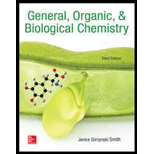
(a)
Interpretation:
The shift of the direction is to be found to attain equilibrium for the reaction
Concept Introduction:
If the number of reactants and products is not equal, then the system is said to be in a non-equilibrium state. Hence, to attain an equilibrium, it will shift to either direction to be in equilibrium.
(b)
Interpretation:
The shift of the direction is to be found to attain equilibrium for the reaction
Concept Introduction:
If the number of reactants and products is not equal, then the system is said to be a nonequilibrium state.
Hence, to attain an equilibrium, it will shift to either direction to be in equilibrium.
(c)
Interpretation:
The shift of the direction is to be found to attain equilibrium for the reaction
Concept Introduction:
If the number of reactants and products is not equal, then the system is said to be a non-equilibrium state.
Hence, to attain an equilibrium, it will shift to either direction to be in equilibrium.
(d)
Interpretation:
The shift of the direction is to be found to attain equilibrium for the reaction
Concept Introduction:
If the number of reactants and products is not equal, then the system is said to be a nonequilibrium state.
Hence, to attain an equilibrium, it will shift to either direction to be in equilibrium.
Want to see the full answer?
Check out a sample textbook solution
Chapter 6 Solutions
General, Organic, & Biological Chemistry
- The following four diagrams represent gaseous reaction mixtures for the chemical reaction A2 + B2 2AB. If the numerical value of the equilibrium constant for the reaction is 64, which of the diagrams represents the equilibrium mixture? (A atoms are red and B atoms are green in the various diagrams.)arrow_forwardBased on the diagrams, chemical reaction, and reaction conditions depicted in Problem 9-83, which of the diagrams represents the equilibrium mixture if the numerical value of the equilibrium constant is 9.0?arrow_forwardFor the reaction C6H6(g)+3H2(g)C6H12(g)+heat determine in what direction the equilibrium will be shifted by each of the following changes. Decreasing the concentration of H2 a. Increasing the concentration of C6H6 b. Decreasing the temperature c. Increasing the pressure by decreasing the volume of the containerarrow_forward
- Use Le Chteliers principle to predict the direction of the equilibrium shift in the following equilibria when the indicated stress is applied: a. Ag+(aq)+Cl(aq)AgCl(s); some Ag+ is removed. b. 2HI(g)+heatH2(g)+I2(g); the system is heated. c. 6Cu(s)+N2(g)+heat2Cu3N(s); the system is cooled and some N2 is removed.arrow_forward. Consider the following exothermic reaction at equilibrium: N2(g)+3H2(g)2NH3(g)Predict how the following changes affect the number of moles of each component of the system after equilibrium is re-established by completing the table. Complete the table with the terms increase, decrease, or no change. N2 H2 NH3 Add N2(g) Remove H2(g) Add NH3(g) Add Ne(g) (constant V) Increase the temperature Decrease the volume (constant T) Add a catalystarrow_forward. For the reaction 3O2(g)2O3(g)The equilibrium constant, K, has the value 1.121054at a particular temperature. a. What does the very small equilibrium constant indicate about the extent to which oxygen gas, O2(g), is converted to ozone gas, O3(g), at this temperature? b. If the equilibrium mixture is analyzed and [O2(g)]is found to be 3.04102M, what is the concentration of O3(g) in the mixture’?arrow_forward
- Based on the diagrams, chemical reaction, and reaction conditions depicted in Problem 9-81, for which of the diagrams is the numerical value of the equilibrium constant the smallest?arrow_forwardConsider the system 4 NH3(g) + 3 O2(g) ⇌ 2 N2(g) + 6 H20(ℓ) ΔrH° = −1530.4 kJ/mol How will the amount of ammonia at equilibrium be affected by removing O2(g) without changing the total gas volume? adding N2(g) without changing the total gas volume? adding water without changing the total gas volume? expanding the container? increasing the temperature? Which of these changes (i to v) increases the value of K? Which decreases it?arrow_forwardConsider the reaction N2O4(g)2NO2(g). Draw a graph illustrating the changes of concentrations of N2O4 and NO2 as equilibrium is approached. Describe how the rates of the forward and reverse reactions change as the mixture approaches dynamic equilibrium. Why is this called a dynamic equilibrium?arrow_forward
- When writing a chemical equation for a reaction that comes to equilibrium. how do we indicate symbolically that the reaction is reversible?arrow_forward. Consider the reaction 2CO(g)+O2(g)2CO2(g)Suppose the system is already at equilibrium, and then an additional mole of CO 2(g) is injected into the system at constant temperature. Does the amount of O2(g) in the system increase or decrease? Does the value of K for the reaction change?arrow_forwardPhosphorus pentachloride decomposes at elevated temperatures. PCl5(g) PCl3(g) + Cl2(g) An equilibrium mixture at some temperature consists of 3.120 g of PCl5, 3.845 g of PCl3, and 1.787 g of Cl2 in a 10.0-L flask. If you add 1.418 g of Cl2, how will the equilibrium be affected? What will the concentrations of PCl5, PCl3, and Cl2 be when equilibrium is reestablished?arrow_forward
 General, Organic, and Biological ChemistryChemistryISBN:9781285853918Author:H. Stephen StokerPublisher:Cengage Learning
General, Organic, and Biological ChemistryChemistryISBN:9781285853918Author:H. Stephen StokerPublisher:Cengage Learning Chemistry: An Atoms First ApproachChemistryISBN:9781305079243Author:Steven S. Zumdahl, Susan A. ZumdahlPublisher:Cengage Learning
Chemistry: An Atoms First ApproachChemistryISBN:9781305079243Author:Steven S. Zumdahl, Susan A. ZumdahlPublisher:Cengage Learning
 ChemistryChemistryISBN:9781305957404Author:Steven S. Zumdahl, Susan A. Zumdahl, Donald J. DeCostePublisher:Cengage Learning
ChemistryChemistryISBN:9781305957404Author:Steven S. Zumdahl, Susan A. Zumdahl, Donald J. DeCostePublisher:Cengage Learning Chemistry & Chemical ReactivityChemistryISBN:9781133949640Author:John C. Kotz, Paul M. Treichel, John Townsend, David TreichelPublisher:Cengage Learning
Chemistry & Chemical ReactivityChemistryISBN:9781133949640Author:John C. Kotz, Paul M. Treichel, John Townsend, David TreichelPublisher:Cengage Learning Introductory Chemistry: A FoundationChemistryISBN:9781337399425Author:Steven S. Zumdahl, Donald J. DeCostePublisher:Cengage Learning
Introductory Chemistry: A FoundationChemistryISBN:9781337399425Author:Steven S. Zumdahl, Donald J. DeCostePublisher:Cengage Learning





